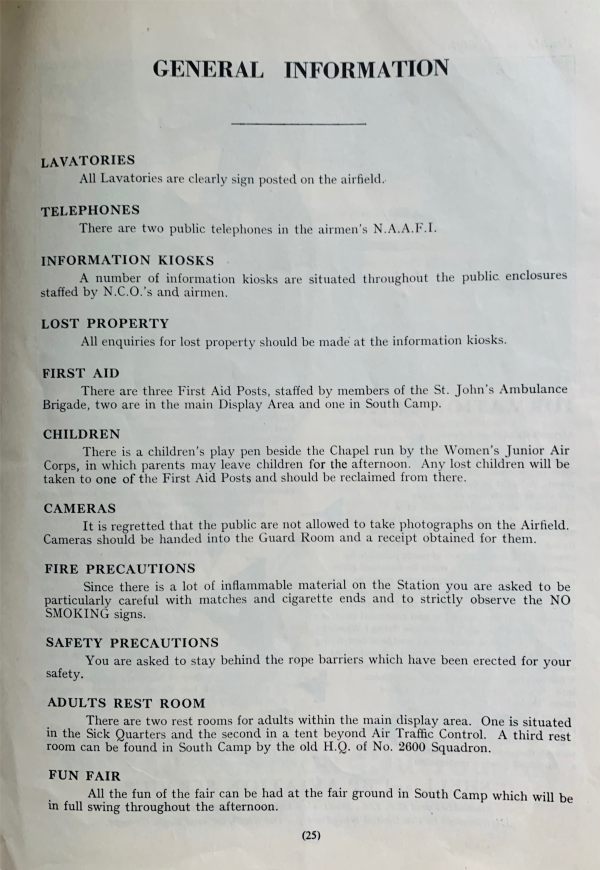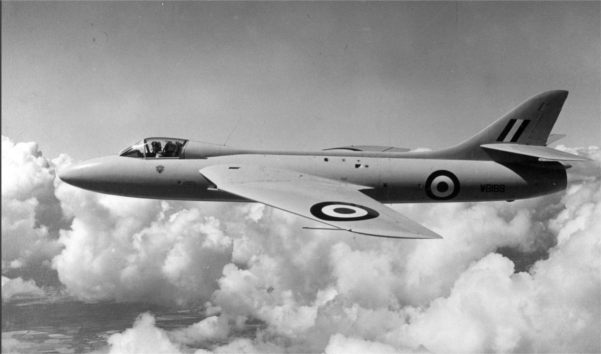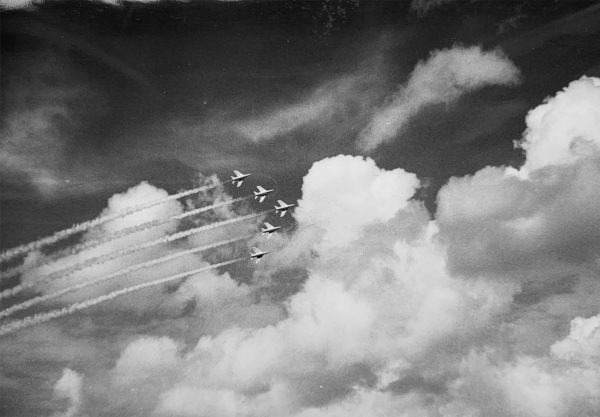A Time to Remember
Posted on 20/09/2020 By Bertie
The RAF March:
“Time to get up Bobby! We are going to the Biggin Hill Airshow today.”
His parents, Sid and Dorothy, were already up. “Dolly” cooking Sid his breakfast in the tiny galley kitchen.

Dolly.
Bobby had long before avoided his mum’s cooking and started a life time devotion to Shredded Wheat. It was 1955. Just fifteen years after the Battle of Britain. Bobby was 11. His mum and dad both 56. It must have been a shock to find themselves parents again in 1944. Back then, times had been really hard. Sid had been too young for the First World War. Too old for the Second. And yet he worked right through that war as a tool setter in KLG’s factory at Roehampton. Making parts for Rolls-Royce and the famous Merlin engine. The factory was attacked on occasion. Sid never had a car and cycled a few miles each way from Brocks Drive, North Cheam. He had seen the Battle of Britain above his head. Seen the V1 “Doodlebug” flying bombs aimed at London. Witnessed stray bombs blowing up and killing neighbours. Throughout his adult life he had coped with a profound limp. The result of a childhood accident.

This picture means so much to Bobby. He can vividly recall his dad walking with that severe limp. This is Ryde, Isle of Wight a few years later. Mum dressed for the British summer.
Sid loved all things mechanical. Steam engines, buses, boats. But most of all he loved planes. In those days, Britain was a major player in aviation and he was immensely proud of that.
“Hurry up Bobby. The bus goes at 8.15. I’ve made your picnic.” (Hovis sandwiches with apricot jam, Lyons individual fruit pie, Penguin biscuit. Not a phenomenal memory, but the same picnic every time!) And off they went. A hyperactive young lad and an ageing father. Sid who instilled in Bobby and big brother Tony a lifetime of thrills in the mechanical world. For both, steam trains were the start. Tony move onto ships. Bobby onto aircraft.

725 Green line Coach. Full Route Windsor to Gravesend. An early “M25” sub-orbital route.
The bus was on time. A Green Line coach on the 725 route that would take them to Bromley in about an hour. From there, it was the 410 green double decker, augmented by dozens of extra buses, that took them to the airfield.

An RT bus on the 410. Green.
Heading for the static park to see which planes would be there. Buying a programme to see what was planned for the flying display. Many of the planes flying from one aerodrome to another. It was quite unlike the Airshows of today. Far less organisation. Planes flying much closer to the crowd than nowadays. Some lengthy gaps at times if a plane didn’t turn up. And it was free. Basically… “Come and see what a marvellous service the RAF is… and join”.
The Dambusters March:
The Programme (excerpts)


“Home Service”. Like most of his era, Bobby’s parents didn’t have a television. The radio was their world.

Although it celebrated the Battle of Britain, the Airshow was the RAF opening its bases to the general public for just one day. And was therefore “AT HOME”.

THE FLYING DISPLAY.
This was the main reason for buying the programme and eagerly read as we had no idea what it would consist of. Our apologies for the small print that will reveal to you a cornucopia of fifties aeroplanes. (Click on picture for larger version.)

THE STATIC AIRCRAFT DISPLAY.
The closest you would ever get to those magnificent machines.

Recruitment. There’s a career here for you.

The NAAFI paying tribute to the “few” just fifteen years later.



The “At Home” days were the Benevolent Funds main money raiser.

Boring?…. I don’t think so! Bobby only discovered vital information in 2020!

And here it is.
Unbelievable, by today’s events and obsession with recording everything possible. Photography was banned. Hand your camera in at the Guard Room. Biggin Hill was still an operational fighter base then. Many of the state of the art aircraft still had secrets for the outside world. And maybe the RAF was a little nervous. It didn’t last. And didn’t matter to Sid and Bobby. They only had a box camera between them that took just eight pictures on a roll film. Bobby still has many family pictures taken with that camera a long time ago. In a shoe box. But useless for an Airshow.

It’s too long ago to remember all the details, but there were some unforgettable moments. Britain was constantly developing new and experimental aircraft. We held the world speed record on a number of occasions. We needed test pilots who were heroes. Both during the war and after. We had two of the most famous of all. Mike Lithgow and Neville Duke . Mike flying the Supermarine Swift. Neville the Hawker Hunter. Both had held the world speed record. Both that day out to impress. Out of a clear blue sky, Lithgow put the Swift into a shallow dive. Faster and faster he dropped towards the airfield. To this very day Bobby can still remember the weird sensation of a plane flying so fast it had left sound behind it. Soaring up into heavens, the noise came a few seconds later and a big bang. He had broken the bleedin’ sound barrier. Later, not to be outdone, Neville Duke took off and he too broke the sound barrier.

Hawker Hunter.

Supermarine Swift.
Never again. We can’t remember exactly, but think that it was breaking the sound barrier at Farnborough that was the last straw. The windows and greenhouses of Kent paid testament to those extraordinary gung-ho days. There were formations. All three V Bombers. Even a Sunderland Flying Boat. And it all ended in spectacular fashion with Meteors attacking the airfield with lots of big bangs and flashes.

The V bombers… Vulcan, Valiant and Victor.

Hunter formation team.

Sunderland Flying Boat.
And then it was the long journey home. An enormous queue for buses that was soon dissipated, as they had laid on so many extra buses.
Sid never went again. Instead, Bobby had realised it was too much for his old dad and in any event had discovered the new love of his life. Cycling. So he cycled to Biggin Hill in 1956 at just 12 years old. Even rode down the famous Salt Box Hill with its café atop made famous in the battle.
Battle of Britain
https://www.youtube.com/watch?v=jXbDQBsFFIE
Bobby did eventually get a camera when he went to work in 1961. And that set off a lifetime of yet another big hobby. The first time he took it to Biggin Hill it would be planes almost out of sight and still in black and white. Nevertheless, some are still unforgettable. Like this one from 1961. Taken on his Retinette 1B, which he still has with a yellow filter to enhance the clouds.

The Yellow Gnats formation team that preceded the Red Arrows.
Duxford is the place for Airshow enthusiasts nowadays, but Biggin Hill will always have the memories. They still have Airshows there, but nothing to compare with those far off days.
And here is a video of the Hardest Day.
Lighting a Candle for Diddley

– – – – – – – –










Leave a Reply